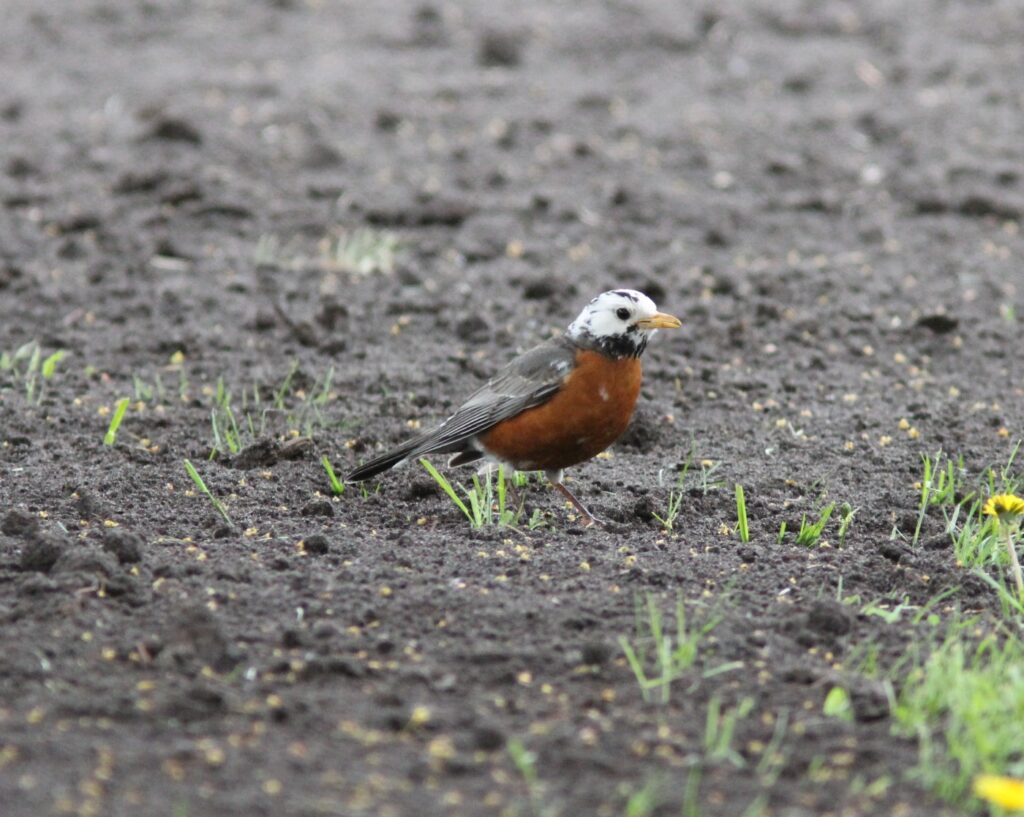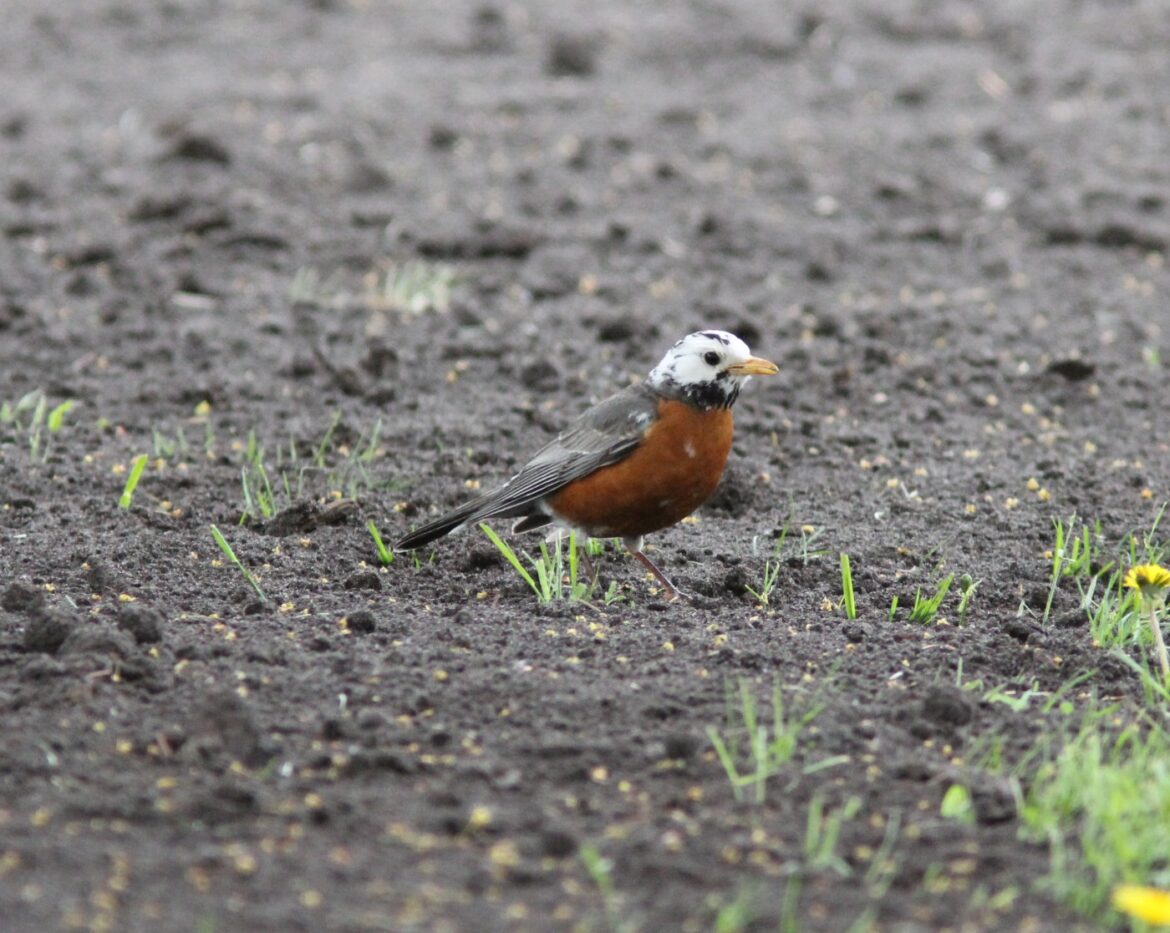
By Rebecca Bracken
Imagine staring out your back window, watching the birds come to your feeder. You see Carolina Wrens, Carolina Chickadees, and a Northern Cardinal. Wait, is it a cardinal? You see what appears to be a male Northern Cardinal, but something isn’t quite normal. Where the feathers are usually deep red, you see a large number of white feathers instead.
What you’ve just observed is what is called a leucistic (pronounced “loo-si-stick”) bird. Leucism is the partial loss of pigmentation and causes white coloration in the form of patches or spots on the skin, fur, or feathers. Some leucistic birds have only one or two white feathers; others are white all over their body. These feathers are weaker than the normal feathers and are more prone to wear. Some leucistic birds have a hard time flying because of these abnormal feathers. Interestingly, sometimes when a bird loses a feather while trying to get away from a predator, the new feather grows will be white! Once it molts that new feather, a colored one often grows back in.
Leucism is really an umbrella term for a variety of abnormal plumages. Sometimes a bird exhibits a dilution, meaning their plumage is washed out or lightened compared to the normal coloring of their feathers. Some birds only have a few white feathers and are called pied or piebald birds.
But leucism is different from albinism. In albinism, birds will be completely white, but also lose pigment in their eyes, creating red or pink eyes. True albinism is thought to be rare in the wild. Many albino animals have poor eyesight and are considered more conspicuous. Most albino birds are considered to be easy targets for predators and rarely survive past fledging. Ones that do survive may have a harder time finding a mate; there is evidence that the lack of coloring means the bird may not be recognized or accepted by a potential mate.
And then there’s the opposite for leucism and albinism – melanism. Melanism causes an increase in dark pigmentation in the feathers. Sometimes caused by certain diets, melanistic birds can naturally occur in the wild. Some raptors, like the Red-tailed Hawk, have a melanic form or morph, which is just a darker version of what is considered a typical individual.
In between the completely white and completely dark abnormal plumages, there are also some interesting color variations caused by genetic variation or diet. Birds exhibiting xanthochroism have yellowish or orange feathers instead of red feathers. This is often seen in House Finches. Birds that have erythrism appear more red or rufous than normal. Eastern Screech-Owl is a species that occurs in Texas that has commonly occurring rufous individuals.
It’s estimated that only 1 in 30,000 birds have abnormal plumage, so most people will never see one. If you’re lucky enough to see a leucistic or albino bird, be sure to snap a picture!

